Turning Waste into A Resource: Isolation and Characterization of High-Quality Collagen and Oils from Atlantic Bluefin Tuna Discards
Abstract
:1. Introduction
2. Materials and Methods
2.1. Procurement of Raw Material
2.2. Collagen Analysis and Extraction
2.2.1. Raw Material Pre-Treatment
2.2.2. Extraction
2.2.3. Cleaning and Retrieval
2.2.4. Quantification of Total Protein Content and Hydroxyproline
2.2.5. SDS-PAGE
2.2.6. FTIR
2.2.7. Microbiological Assessment
2.2.8. Heavy Metal Analysis
2.3. Fish Oil Extraction and Analysis
2.3.1. Extraction Techniques
2.3.2. GC-FID Fatty Acid Profile Analysis
2.3.3. Determination of Oxidation Parameters
2.3.4. Determination of Free Fatty Acid Content and Degree of Unsaturation
3. Results
3.1. Isolation of Collagen
3.2. Characterization of Extracted Collagen
3.3. FTIR Spectra of Collagen
3.4. Heavy Metal Assessment
3.5. Tuna Oil Extraction Yields
3.6. GC-FID Fatty Acid Profile Analysis and Oxidation Parameters
4. Discussion
4.1. Collagen Isolation
4.2. Characterization of Collagen
4.3. Oil Extraction
4.4. Circularity
5. Conclusions
Author Contributions
Funding
Institutional Review Board Statement
Data Availability Statement
Acknowledgments
Conflicts of Interest
References
- FAO. The State of World Fisheries and Aquaculture 2018—Meeting the Sustainable Development Goals. Rome. Licence: CC BY-NC-SA 3.0 IGO 2020. Available online: https://www.fao.org/3/ca9229en/ca9229en.pdf (accessed on 18 October 2021).
- NSO. Aquaculture: 2019 (Rep.). Malta: National Statistics Office 2020. Available online: https://nso.gov.mt/en/News_Releases/Documents/2021/11/News2021_210.pdf (accessed on 10 November 2021).
- Ferraro, V.; Cruz, I.B.; Jorge, R.F.; Malcata, F.X.; Pintado, M.E.; Castro, P.M.L. Valorisation of natural extracts from marine source focused on marine by-products: A review. Food Res. Int. 2010, 43, 2221–2233. [Google Scholar] [CrossRef]
- WWF. Bluefin Symposium Celebrates Conservation Gains While Urging Continued Action; WWF: Morges, Switzerland, 2021; Available online: https://www.wwfmmi.org/?2090941%2FBluefin-Symposium-Celebrates-Conservation-Gains--While-Urging-Continued-Action (accessed on 15 January 2022).
- McKinney, R. A Global Tuna Valuation: Netting Billions 2020. A Global Tuna Valuation: Netting Billions 2020|The Pew Charitable Trusts. 2020. Available online: https://www.pewtrusts.org/en/research-and-analysis/reports/2020/10/netting-billions-2020-a-global-tuna-valuation (accessed on 15 January 2022).
- European Commision. Communication from the Commission to the European Parliament, the Council, the European Eco-nomic and Social Committee and the Committee of the Regions. Eur-Lex. Available online: https://eur-lex.europa.eu/legal-content/EN/TXT/?qid=1583933814386&uri=COM%3A2020%3A98%3AFIN (accessed on 14 January 2022).
- Caruso, G. Fishery Wastes and By-products: A Resource to Be Valorised. J. Fish. Sci. 2015, 9, 80–83. [Google Scholar]
- Johnson, C.; Ruiz Sierra, A.; Dettmer, J.; Sidiropoulou, K.; Zicmane, E.; Canalis, A.; Llorente, P.; Paiano, P.; Mengal, P.; Puzzolo, V. The bio-based industries joint undertaking as a catalyst for a green transition in Europe under the European Green Deal. EFB Bioecon. J. 2021, 1, 100014. [Google Scholar] [CrossRef]
- Nagai, T. Isolation of collagen from fish waste material—Skin, bone and fins. Food Chem. 2000, 68, 277–281. [Google Scholar] [CrossRef]
- Jongjareonrak, A.; Benjakul, S.; Visessanguan, W.; Tanaka, M. Isolation and characterization of collagen from bigeye snapper (Priacanthus macracanthus) skin. J. Sci. Food Agric. 2005, 85, 1203–1210. [Google Scholar] [CrossRef]
- Raman, M.; Gopakumar, K. Fish Collagen and its Applications in Food and Pharmaceutical Industry: A Review 2018. Available online: https://www.ecronicon.com/ecnu/pdf/ECNU-13-00529.pdf (accessed on 12 October 2020).
- Jafari, H.; Lista, A.; Siekapen, M.M.; Ghaffari-Bohlouli, P.; Nie, L.; Alimoradi, H.; Shavandi, A. Fish Collagen: Extraction, Characterization, and Applications for Biomaterials Engineering. Polymers 2020, 12, 2230. [Google Scholar] [CrossRef]
- Nagai, T.; Suzuki, N. Preparation and characterization of several fish bone collagens. J. Food Biochem. 2000, 24, 427–436. [Google Scholar] [CrossRef]
- Karayannakidis, P.D.; Zotos, A. Fish Processing By-Products as a Potential Source of Gelatin: A Review. J. Aquat. Food Prod. Technol. 2014, 25, 65–92. [Google Scholar] [CrossRef]
- Silva, T.; Moreira-Silva, J.; Marques, A.; Domingues, A.; Bayon, Y.; Reis, R. Marine Origin Collagens and Its Potential Applications. Mar. Drugs 2014, 12, 5881–5901. [Google Scholar] [CrossRef] [Green Version]
- Skierka, E.; Sadowska, M. The influence of different acids and pepsin on the extractability of collagen from the skin of Baltic cod (Gadus morhua). Food Chem. 2007, 105, 1302–1306. [Google Scholar] [CrossRef]
- Pal, G.K.; Suresh, P.V. Sustainable valorisation of seafood by-products: Recovery of collagen and development of collagen-based novel functional food ingredients. Innov. Food Sci. Emerg. Technol. 2016, 37, 201–215. [Google Scholar] [CrossRef]
- Benjakul, S.; Thiansilakul, Y.; Visessanguan, W.; Roytrakul, S.; Kishimura, H.; Prodpran, T.; Meesane, J. Extraction and characterisation of pepsinsolubilised collagens from the skin of bigeye snapper (Priacanthus tayenus and Priacanthus macracanthus). J. Sci. Food Agric. 2010, 90, 132–138. [Google Scholar] [CrossRef]
- Sahena, F.; Zaidul, I.S.M.; Jinap, S.; Saari, N.; Jahurul, H.A.; Abbas, K.A.; Norulaini, N.A. PUFAs in Fish: Extraction, Fractionation, Importance in Health. Compr. Rev. Food Sci. Food Saf. 2009, 8, 59–74. [Google Scholar] [CrossRef]
- Hedge, A. EPA/DHA (Omega 3) Ingredients Market to Hit $5.7 Billion. 2019. Available online: https://www.prnewswire.com/news-releases/epadha-omega-3-ingredients-market-to-hit-5-7-billion-by-2026-global-market-insights-inc-300953616.html (accessed on 17 October 2020).
- Hilleman, D.E.; Wiggins, B.S.; Bottorff, M.B. Critical differences between dietary supplement and prescription omega-3 fatty acids: A narrative review. Adv. Ther. 2020, 37, 656–670. [Google Scholar] [CrossRef] [PubMed] [Green Version]
- Ghaly, A.E.; Ramakrishnan, V.V.; Brooks, M.S.; Budge, S.M.; Dave, D. Fish Processing Wastes as a Potential Source of Proteins, Amino Acids and Oils: A Critical Review. J. Microb. Biochem. Technol. 2013, 5, 107–129. [Google Scholar] [CrossRef] [Green Version]
- FAO. The Production of Fish Meal and Oil. Rome: Food and Agriculture Organization of the United Nations. 1986. Available online: https://www.fao.org/3/X6899E/X6899E02.html (accessed on 17 October 2020).
- Arruda, L.F.; Borghesi, R.; Portz, L.; Cyrino, J.E.; Oetterer, M. Fish silage in black bass (Micropterus salmoides) feed as an alternative to fish meal. Braz. Arch. Biol. Technol. 2009, 52, 1261–1266. [Google Scholar] [CrossRef] [Green Version]
- Rubio-Rodríguez, N.; de Diego, S.M.; Beltrán, S.; Jaime, I.; Sanz, M.T.; Rovira, J. Supercritical fluid extraction of fish oil from fish by-products: A comparison with other extraction methods. J. Food Eng. 2012, 109, 238–248. [Google Scholar] [CrossRef] [Green Version]
- Bonilla, J.R.; Concha, J.L.H. Methods of extraction refiningand concentration of fish oil as a source of omega-3 fatty acids. Transform. Agro-Ind. 2018, 19, 645–668. [Google Scholar]
- Mæhre, H.; Jensen, I.-J.; Eilertsen, K.-E. Enzymatic pre-treatment increases the protein Bioaccessibility and extractability in Dulse (Palmaria palmata). Mar. Drugs 2006, 14, 196. [Google Scholar] [CrossRef] [Green Version]
- Sigma-Aldrich. MAK008 Technical Bulletin—Sigma-Aldrich. MAK008 Hydroxyproline Assay Kit Technical Bulletin. Available online: https://www.sigmaaldrich.com/deepweb/assets/sigmaaldrich/product/documents/418/543/mak008bul.pdf (accessed on 8 November 2021).
- Maniatis, T.; Fritsch, E.F.; Sambrook, J. Molecular Cloning: A Laboratory Manual; Cold Spring Harbor Laboratory: Cold Spring Harbor, NY, USA, 1982. [Google Scholar]
- Kenawy, I.M.M.; Hafez, M.A.H.; Akl, M.A.; Lashein, R.R. Determination by AAS of some trace heavy metal ions in some natural and biological samples after their preconcentration using newly chemically modified chloromethylated polystyrene-PAN ion exchanger. Analyt. Sci. 2000, 16, 493–500. [Google Scholar] [CrossRef] [Green Version]
- Loska, K.; Wiechuła, D. Application of principal component analysis for the estimation of source of heavy metal contamination in surface sediments from the Rybnik Reservoir. Chemosphere 2003, 51, 723–733. [Google Scholar] [CrossRef]
- Tapia, J.; Vargas-Chacoff, L.; Bertrán, C.; Pena-Cortes, F.; Hauenstein, E.; Schlatter, R.; Jimenez, C.; Tapia, C. Heavy metals in the liver and muscle of Micropogonias manni fish from Budi Lake, Araucania Region, Chile: Potential risk for humans. Environ. Monit. Assess. 2012, 184, 3141–3151. [Google Scholar] [CrossRef] [PubMed] [Green Version]
- Tanaka, T.; Takahashi, K.; Tsubaki, K.; Hirata, M.; Yamamoto, K.; Biswas, A.; Moriyama, T.; Kawamura, Y. Isolation and characterization of acid-soluble bluefin Tuna (Thunnus orientalis) Skin collagen. Fish. Aquat. Sci. 2018, 21, 1–8. [Google Scholar] [CrossRef]
- Ahmed, R.; Haq, M.; Chun, B.S. Characterization of Marine Derived Collagen Extracted from the by-Products of Bigeye Tuna (Thunnus Obesus). Int. J. Biol. Macromol. 2019, 135, 668–676. [Google Scholar] [CrossRef] [PubMed]
- Kersten, K.M.; Breen, M.E.; Mapp, A.K.; Matzger, A.J. Pharmaceutical solvate formation for the incorporation of the antimicrobial agent hydrogen peroxide. Chem. Commun. 2018, 54, 9286–9289. [Google Scholar] [CrossRef] [PubMed]
- Gómez-Guillén, M.C.; Turnay, J.; Fernández-Dıaz, M.D.; Ulmo, N.; Lizarbe, M.A.; Montero, P. Structural and physical properties of gelatin extracted from different marine species: A comparative study. Food Hydrocoll. 2002, 16, 25–34. [Google Scholar] [CrossRef] [Green Version]
- Rabotyagova, O.S.; Cebe, P.; Kaplan, D.L. Collagen structural hierarchy and susceptibility to degradation by ultraviolet radiation. Mater. Sci. Eng. C 2008, 28, 1420–1429. [Google Scholar] [CrossRef] [PubMed] [Green Version]
- Alemán, A.; Giménez, B.; Montero, P.; Gómez-Guillén, M.C. Antioxidant activity of several marine skin gelatins. LWT-Food Sci. Technol. 2011, 44, 407–413. [Google Scholar] [CrossRef]
- Sanaei, A.V.; Mahmoodani, F.; See, S.F.; Yusop, S.M.; Babji, A.S. Optimization of gelatin extraction and physico-chemical properties of catfish (Clarias gariepinus) bone gelatin. Int. Food Res. J. 2013, 20, 423–430. [Google Scholar]
- Nguyen, B.C.; Kha, T.C.; Nguyen, K.H.N.; Nguyen, H.M.X. Optimization of Enzymatic Hydrolysis of Collagen from Yellowfin Tuna Skin (Thunnus Albacares) by Response Surface Methodology and Properties of Hydrolyzed Collagen. J. Food Processing Preserv. 2021, 45, e15319. [Google Scholar] [CrossRef]
- Muyonga, J.H.; Cole, C.G.B.; Duodu, K.G. Characterisation of acid soluble collagen from skins of young and adult Nile Perch (lates niloticus). Food Chem. 2004, 85, 81–89. [Google Scholar] [CrossRef]
- Jeong, H.-S.; Venkatesan, J.; Kim, S.-K. Isolation and characterization of collagen from marine fish (Thunnus obesus). Biotechnol. Bioprocess Eng. 2013, 18, 1185–1191. [Google Scholar] [CrossRef]
- Regulation (EC) No 1223/2009 of the European Parliament and of the Council of 30 November 2009 on Cosmetic Products OJ L 342, 22.12. 2009, p. 59–209. Available online: https://eur-lex.europa.eu/legal-content/EN/ALL/?uri=celex%3A32009R1223 (accessed on 19 October 2021).
- Murthy, L.N.; Rao, B.M.; Prasad, M.M. Biochemical and Microbiological Evaluation of Tuna Loin Processing Waste. Fish. Technol. 2012, 49, 45–49. [Google Scholar]
- Karunarathna, U. Nutritional evaluation in five species of tuna. Nutr. Physiol. 2019. [Google Scholar] [CrossRef]
- Kołodziejska, I.; Skierka, E.; Sadowska, M.; Kołodziejski, W.; Niecikowska, C. Effect of extracting time and temperature on yield of gelatin from different fish offal. Food Chem. 2008, 107, 700–706. [Google Scholar] [CrossRef]
- Barlow, D.A.; Baird, J.K.; Su, C.-H. Theory of the von weimarn rules governing the average size of crystals precipitated from a supersaturated solution. J. Cryst. Growth 2004, 264, 417–423. [Google Scholar] [CrossRef]
- Edwards, C.A.; O’Brien, W.D., Jr. Modified assay for determination of hydroxyproline in a tissue hydrolyzate. Clin. Chim. Acta 1980, 104, 161–167. [Google Scholar] [CrossRef] [Green Version]
- Lares, M.L.; Huerta-Diaz, M.A.; Marinone, S.G.; Valdez-Márquez, M. Mercury and cadmium concentrations in farmed bluefin tuna (Thunnus orientalis) and the suitability of using the caudal peduncle muscle tissue as a monitoring tool. J. Food Prot. 2012, 75, 725–730. [Google Scholar] [CrossRef]
- Asgedom, A.G.; Besta, M.B.; Gebremedhin, Y.W. Bioaccumulation of Heavy Metals in Fishes of Hashenge Lake, Tigray, Northern Highlands of Ethiopia. Am. J. Chem. 2012, 2, 326–334. [Google Scholar] [CrossRef]
- Ryssel, H.; Kloeters, O.; Germann, G.; Schäfer, T.; Wiedemann, G.; Oehlbauer, M. The antimicrobial effect of acetic acid—an alternative to common local antiseptics? Burns 2009, 35, 695–700. [Google Scholar] [CrossRef]
- Bimbo, A.P. Fish Meal and Oil. In The Seafood Industry; Martin, R.E., Flick, G.J., Eds.; Springer: Boston, MA, USA, 1990. [Google Scholar]
- Taati, M.M.; Shabanpour, B.; Ojagh, S.M. Investigation on fish oil extraction by enzyme extraction and wet reduction methods and quality analysis. AACL Bioflux 2018, 11, 83–90. [Google Scholar]
- Amaral, A.B.; Silva, M.V.; Lannes, S.C. Lipid oxidation in meat: Mechanisms and protective factors—A review. Food Sci. Technol. 2018, 38 (Suppl. S1), 1–15. [Google Scholar] [CrossRef] [Green Version]
- GOED, Technical Guidance Documents. 2020. Available online: https://scioninstruments.com/wp-content/uploads/2020/11/TGD-2020-06-29.pdf (accessed on 24 October 2021).
- Meira, M.; Quintella, C.M.; dos Santos Tanajura, A.; da Silva, H.G.R.; Fernando, J.D.S.; da Costa Neto, P.R.; Pepe, J.M.; Santos, M.A.; Nascimento, L.L. Determination of the Oxidation Stability of Biodiesel and Oils by Spectrofluorimetry and Multivariate Calibration. Talanta 2011, 85, 430–434. [Google Scholar] [CrossRef] [PubMed] [Green Version]
- Sikwese, F.E.; Duodu, K.G. Antioxidant Effect of a Crude Phenolic Extract from Sorghum Bran in Sunflower Oil in the Presence of Ferric Ions. Food Chem. 2007, 104, 324–331. [Google Scholar] [CrossRef] [Green Version]
- Benedet, J.A.; Umeda, H.; Shibamoto, T. Antioxidant Activity of Flavonoids Isolated from Young Green Barley Leaves toward Biological Lipid Samples. J. Agric. Food Chem. 2007, 55, 5499–5504. [Google Scholar] [CrossRef] [PubMed]
- Kim, S.-K.; Kim, Y.-T.; Byun, H.-G.; Nam, K.-S.; Joo, D.-S.; Shahidi, F. Isolation and characterization of antioxidative peptides from gelatin hydrolysate of Alaska pollack skin. J. Agric. Food Chem. 2001, 49, 1984–1989. [Google Scholar] [CrossRef]
- Jun, S.-Y.; Park, P.-J.; Jung, W.-K.; Kim, S.-K. Purification and characterization of an antioxidative peptide from enzymatic hydrolysate of yellowfin sole (Limanda aspera) frame protein. Eur. Food Res. Technol. 2004, 219, 20–26. [Google Scholar] [CrossRef]
- Baehaki, A.; Widiastuti, I.; Nainggolan, C.; Gofar, N. Antioxidant activities of snakehead (Channa Striat A) fish skin: Peptides hydrolysis using protease tp2 isolate from swamp plant silage. Potravinarstvo Slovak J. Food Sci. 2020, 14, 379–384. [Google Scholar] [CrossRef]
- Andersen, S.; Allen, B.; Domingo, G.C. Biomass in the EU Green Deal: Towards Consensus on the Use of Biomass for EU Bioenergy’ Policy Report, 2021. Available online: https://ieep.eu/uploads/articles/attachments/a14e272d-c8a7-48ab-89bc-31141693c4f6/Biomass%20in%20the%20EU%20Green%20Deal.pdf?v=63804370211 (accessed on 29 December 2021).
- Camilleri, M.A. European environment policy for the circular economy: Implications for business and industry stakeholders. Sustain. Dev. 2020, 28, 1804–1812. [Google Scholar] [CrossRef]
- Borg, M. Aquaculture-from Conflict to Blue Growth: An Example of Aquaculture Cages Re-Allocation. The European Maritime Spatial Planning Platform. 2018. Available online: https://maritime-spatial-planning.ec.europa.eu/practices/aquaculture-conflict-blue-growth-example-aquaculture-cages-re-allocation (accessed on 14 January 2022).


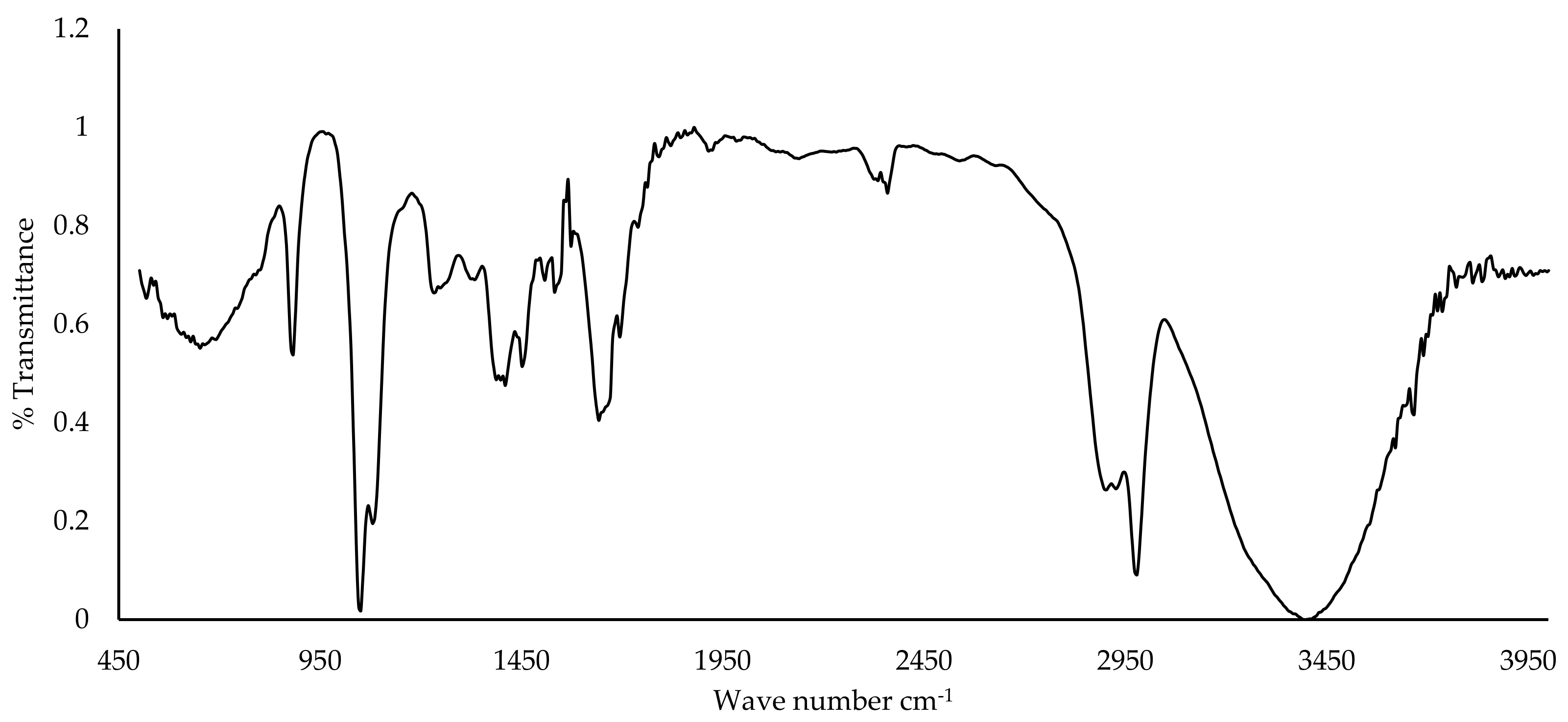

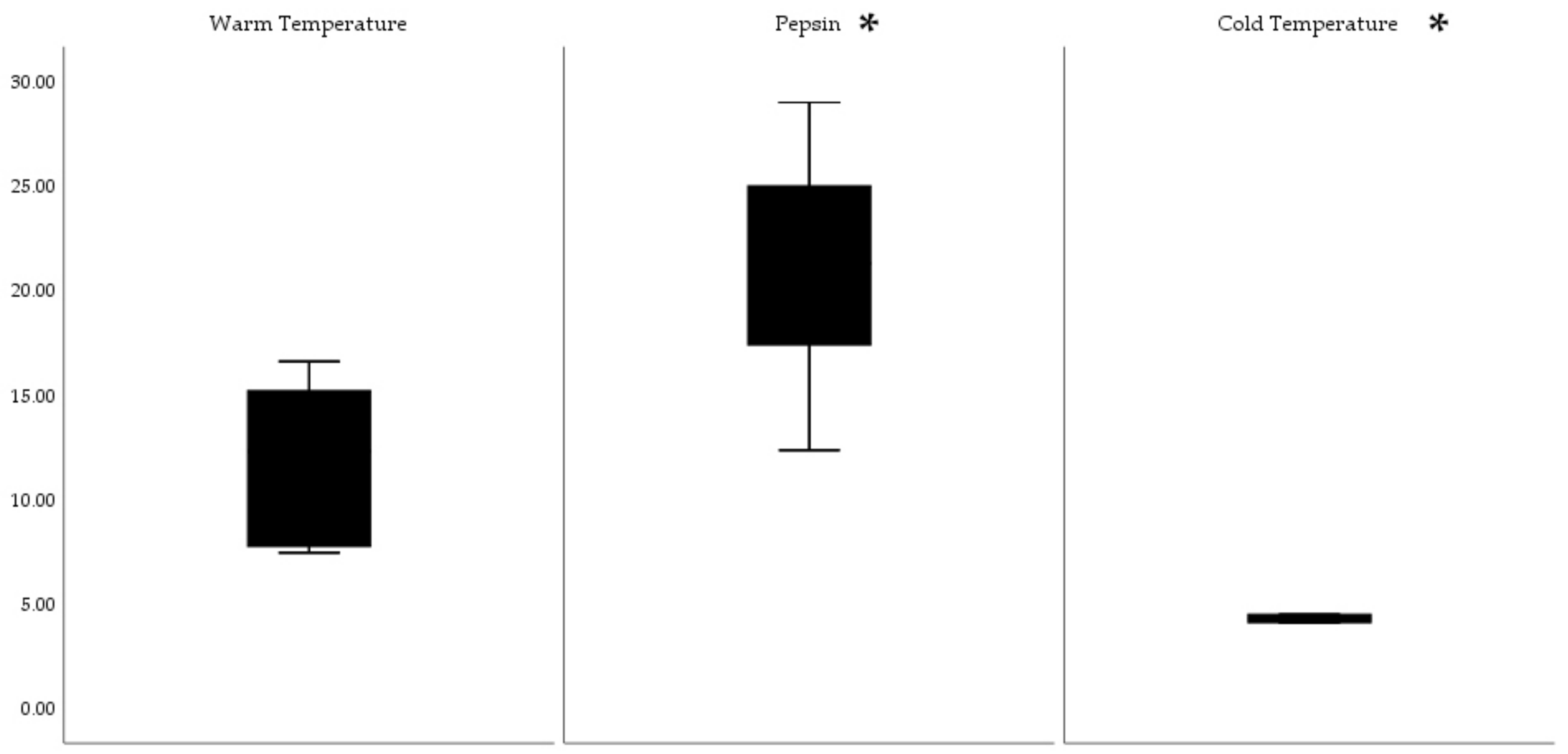

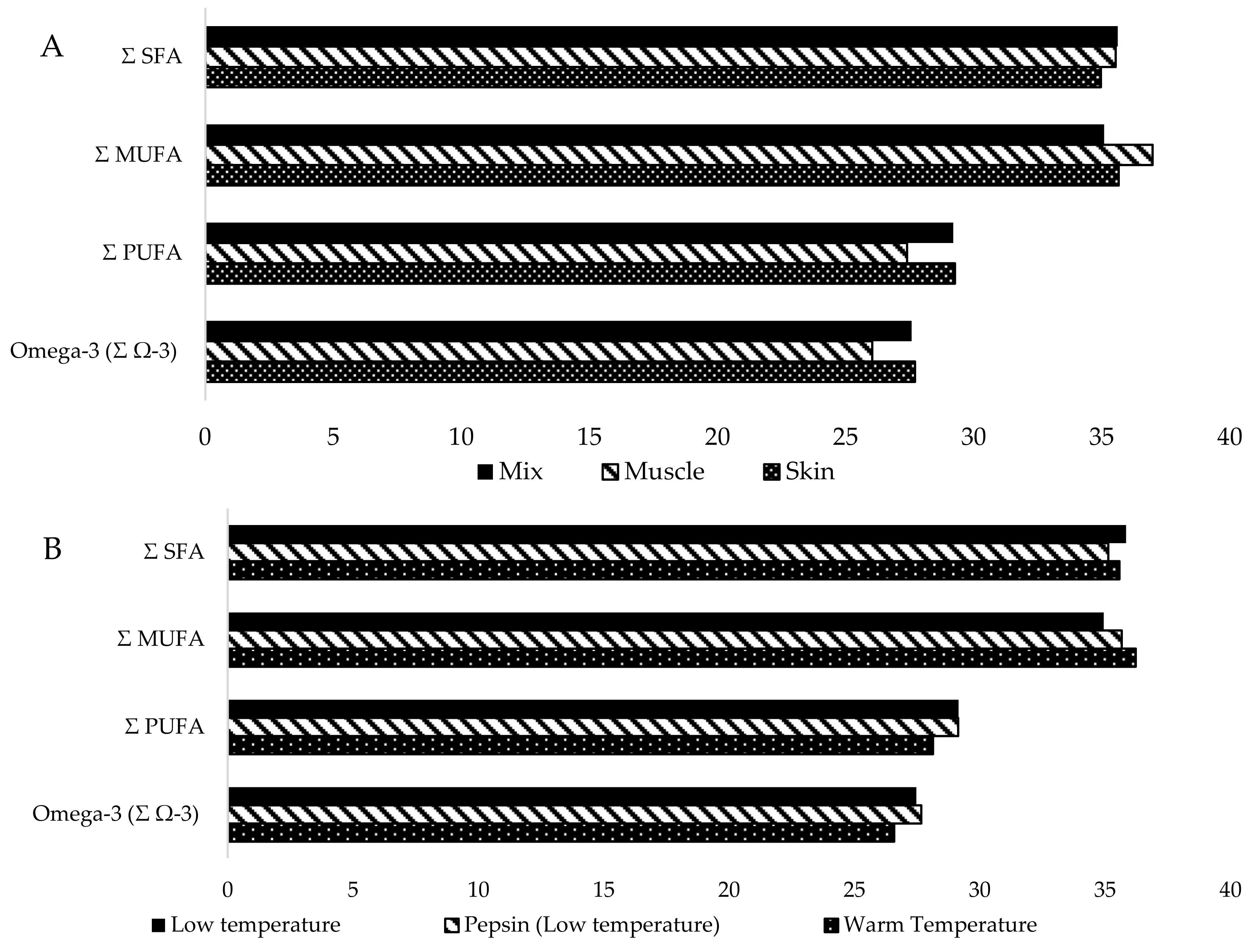
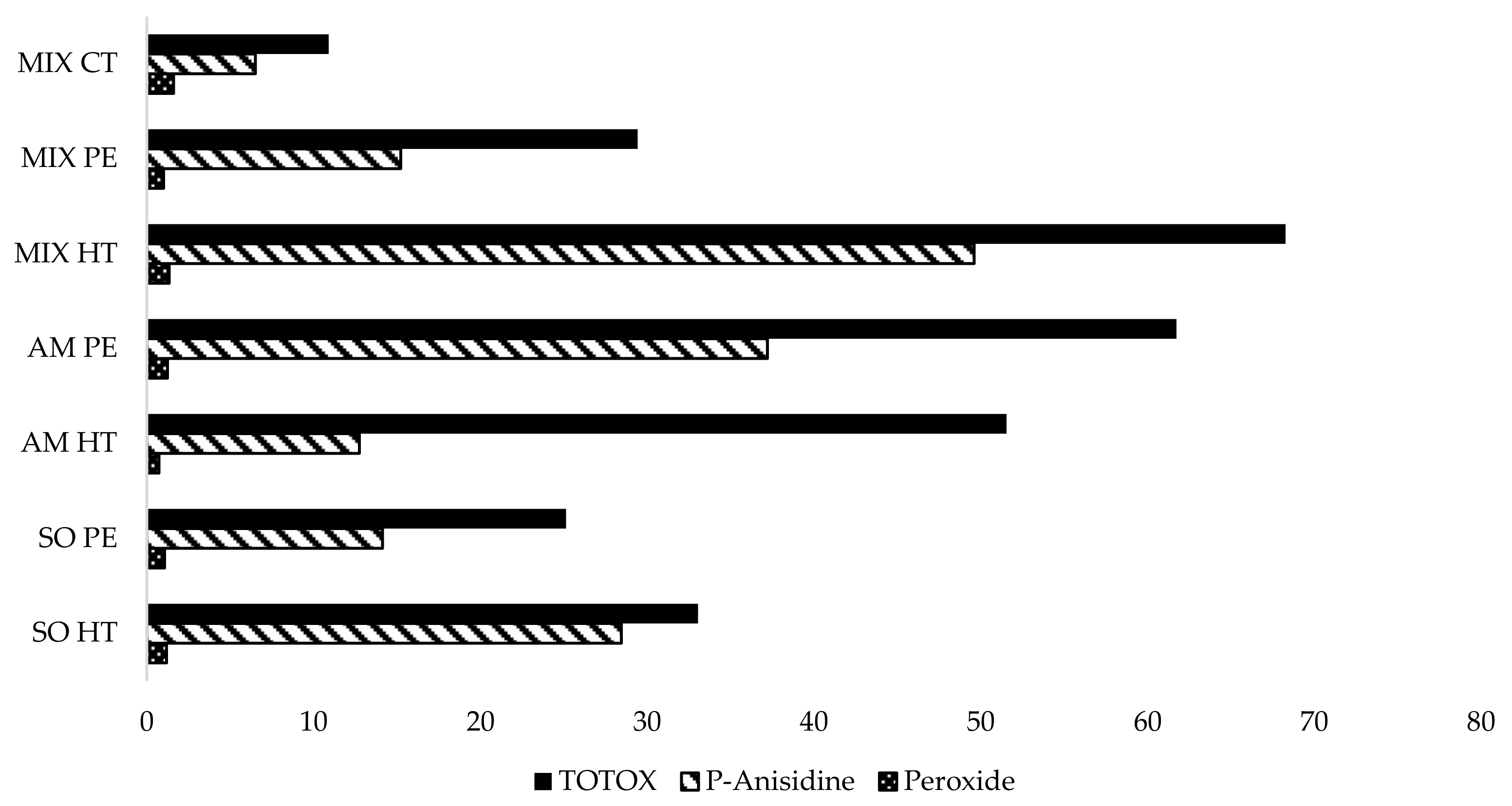
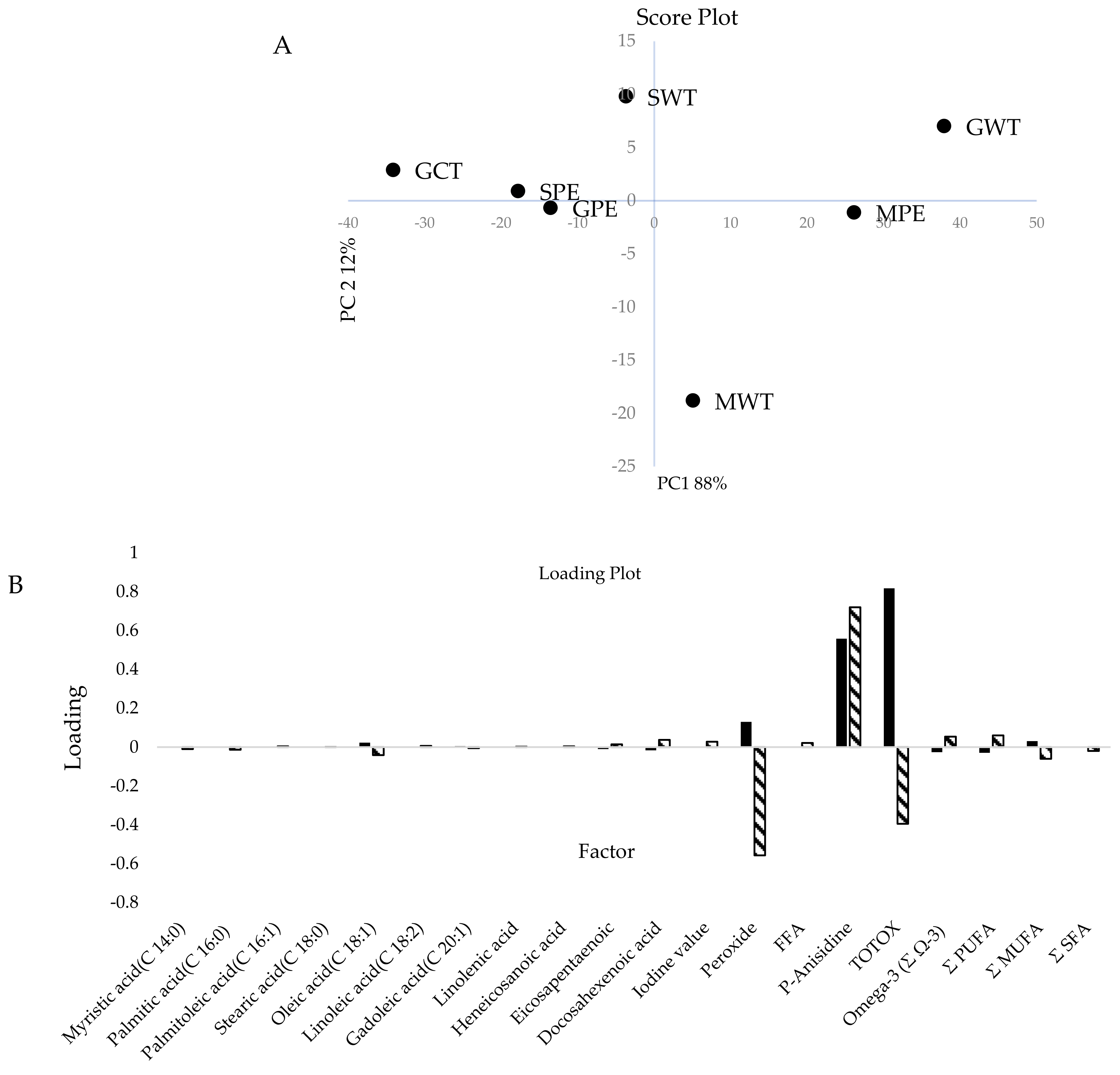
| Heavy Metal | Bone PSC | Bone ASC | General Waste 1 | General Waste 2 | Bovine Collagen |
|---|---|---|---|---|---|
| Cd | 0.08 | 1.56 | 0.08 | <0.01 | <0.01 |
| Zn | 5.12 | 8.05 | 0.58 | 0.42 | 0.42 |
| Cr | 3.08 | 0.38 | 0.15 | 0.09 | 0.09 |
| Cu | - | - | - | - | <0.01 |
| Co | 5.96 | 2.19 | 0.08 | <0.01 | - |
| Ni | - | - | - | - | - |
| Pb | 1.09 | - | 0.02 | <0.01 | <0.01 |
| Fe | 0.20 | 1.46 | 0.20 | 0.24 | 0.24 |
Publisher’s Note: MDPI stays neutral with regard to jurisdictional claims in published maps and institutional affiliations. |
© 2022 by the authors. Licensee MDPI, Basel, Switzerland. This article is an open access article distributed under the terms and conditions of the Creative Commons Attribution (CC BY) license (https://creativecommons.org/licenses/by/4.0/).
Share and Cite
Cutajar, N.; Lia, F.; Deidun, A.; Galdies, J.; Arizza, V.; Zammit Mangion, M. Turning Waste into A Resource: Isolation and Characterization of High-Quality Collagen and Oils from Atlantic Bluefin Tuna Discards. Appl. Sci. 2022, 12, 1542. https://doi.org/10.3390/app12031542
Cutajar N, Lia F, Deidun A, Galdies J, Arizza V, Zammit Mangion M. Turning Waste into A Resource: Isolation and Characterization of High-Quality Collagen and Oils from Atlantic Bluefin Tuna Discards. Applied Sciences. 2022; 12(3):1542. https://doi.org/10.3390/app12031542
Chicago/Turabian StyleCutajar, Neil, Frederick Lia, Alan Deidun, Johann Galdies, Vincenzo Arizza, and Marion Zammit Mangion. 2022. "Turning Waste into A Resource: Isolation and Characterization of High-Quality Collagen and Oils from Atlantic Bluefin Tuna Discards" Applied Sciences 12, no. 3: 1542. https://doi.org/10.3390/app12031542
APA StyleCutajar, N., Lia, F., Deidun, A., Galdies, J., Arizza, V., & Zammit Mangion, M. (2022). Turning Waste into A Resource: Isolation and Characterization of High-Quality Collagen and Oils from Atlantic Bluefin Tuna Discards. Applied Sciences, 12(3), 1542. https://doi.org/10.3390/app12031542






